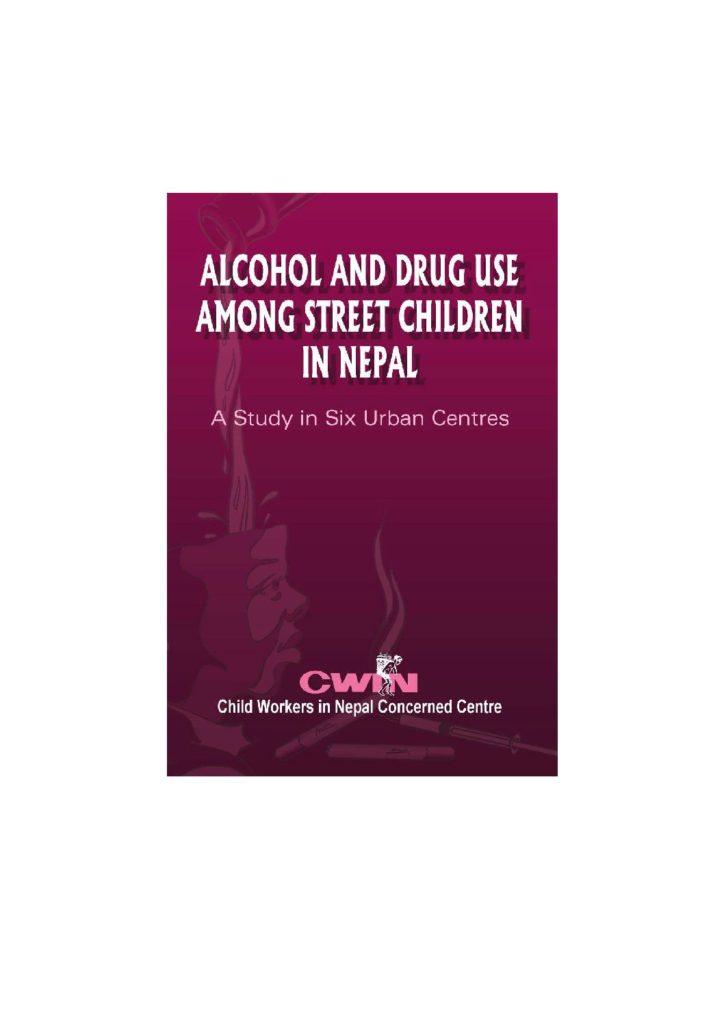
Alcohol and Drug Use among Street Children in Nepal: A Study in Six Urban Centres
Downloads
Summary
The prevalence of drug and alcohol use among street children in Nepal has been a growing concern during the 1990s. Several studies indicate that there are more than 5,000 street children in Nepal. Several reasons among pull and push factors are associated with the lives of a large number of street children. Temptation to earn more and live a better life in the city are the main push factors while lack of food at home, peer influence, maltreatment at home, and abusive and alcoholic parents are the main push factors. In addition, flourishing urban informal sectors based on primitive technology also attract children from the rural areas. Ultimately, however, they land on the street for survival strategy.
The proportion of substance users among street children in Nepal varies greatly by availability of substances, gender, age and background of children. The consequences of alcohol and drug use on street children’s life range from acute and chronic health and emotional problems to disruption in interpersonal relationships, school failure, social marginalisation and criminal behaviour. This study is a departure from other studies in Nepal in that it uncovers a wide range of children at risk from different urban centre’s. Second, it examines the behaviour of street children using alcohol, drugs and tobacco. It also examines children’s perception of using such substances and consequent effect on their lives.
Discussion
Users can discuss this report and make suggestions for future updates. You must be signed in to submit a comment.
No comments
Join the conversation and
Become a Member Existing member loginbecome a member.